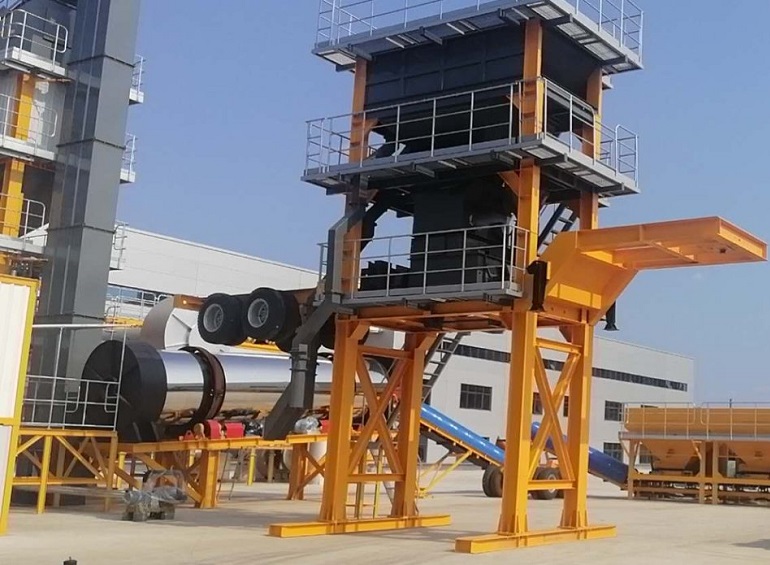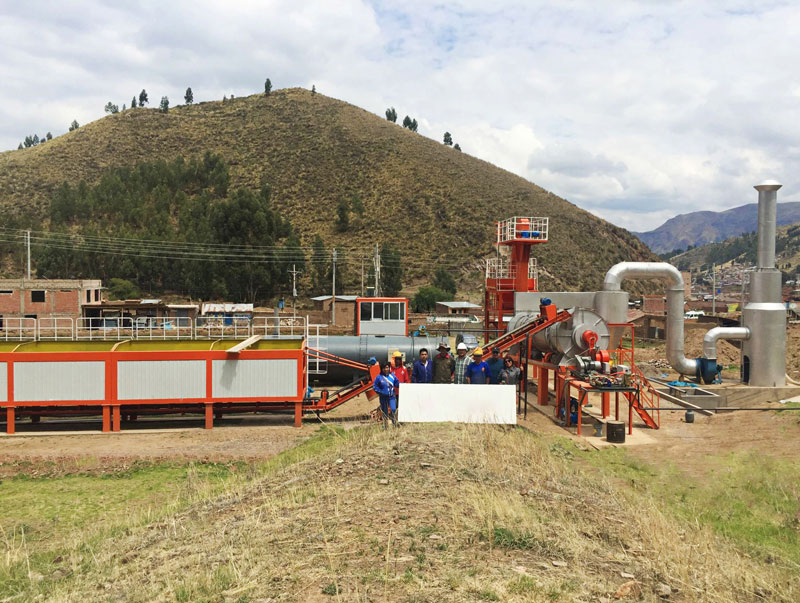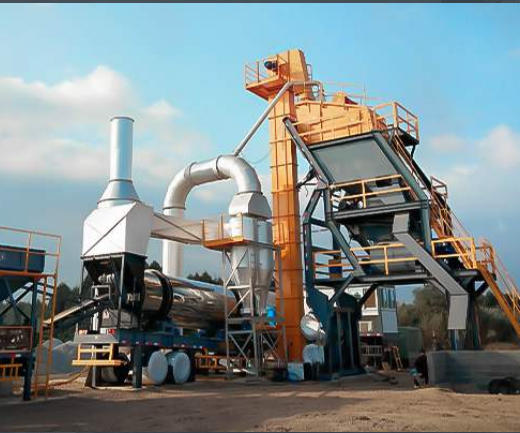Design, produce and installation of supporting asphalt tanks for asphalt mixing plants
The green tank is a new type of asphalt heating storage equipment developed on the basis of thirty years of technology accumulation in the asphalt heating, storage and deep processing industry, combined with the characteristics of traditional thermal oil heating asphalt heating storage equipment and local rapid oil extraction technology. It makes up for the shortcomings of traditional heating oil heating equipment, such as long heating time and high energy consumption. A local heater is installed in the asphalt tank, which is suitable for asphalt storage and heating in transportation and municipal systems. It uses an organic heat carrier (heat-conducting oil) as a heat transfer medium, coal-fired, gas or oil-fired furnace as a heat source, forced circulation by a hot oil pump, and heating the asphalt to the use temperature. The biggest feature of this equipment is fast heating, that is, it can produce high-temperature asphalt in large quantities, save heat energy, and temporarily extract a small amount of hot asphalt. The production of hot asphalt at 160°C generally does not exceed 1.5 hours.
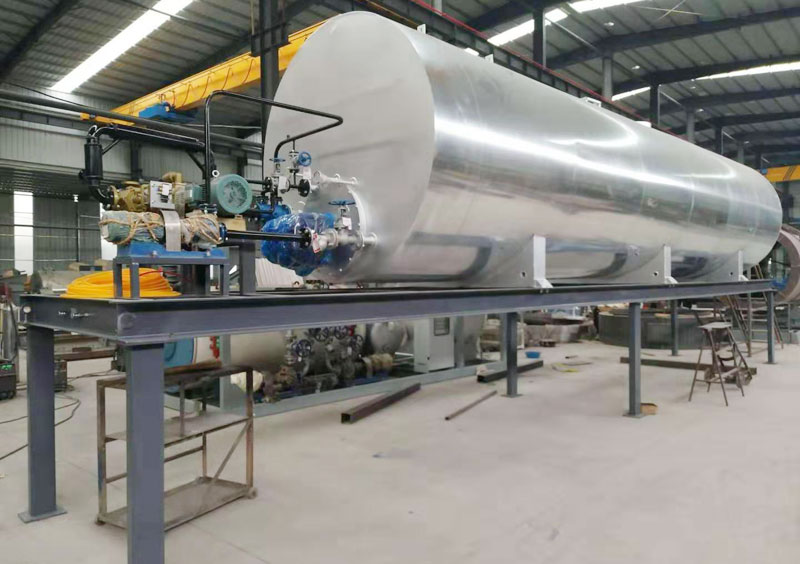
Asphalt tanks can obtain the best working temperature at the lowest pressure, reduce the pressure level requirements of heat equipment, uniform heating, safe and reliable, and can recycle waste heat, improve the thermal efficiency of the equipment, ensure the original performance of the asphalt, It is currently the ideal equipment for heating asphalt in highways, ports, asphalt plants (transit stations), etc. The working principle of the asphalt tank: the thermal oil is forcedly circulated in the closed-circuit liquid phase inside the thermal oil pipeline system under the action of the thermal oil pump, and the thermal oil loaded with high temperature heat energy is transferred to the heating equipment, and the thermal energy is transferred to the low temperature asphalt, so that the asphalt Warm up.
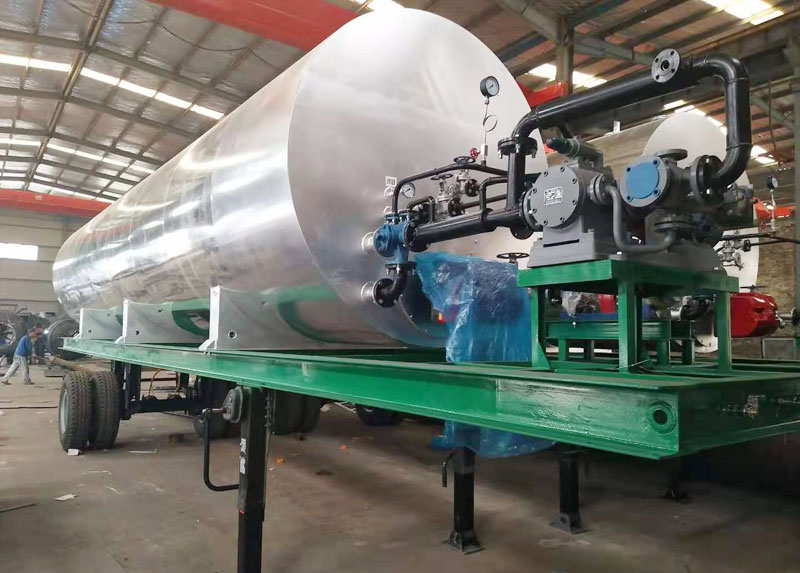
Brief introduction of equipment production process flow:
Add the heat transfer oil to fill the heat transfer oil piping system, open all the valves, start the heat oil pump, the ignition temperature rises, the heat transfer oil gradually rises to the process temperature. Under the action of the hot oil pump, the heat transfer oil is sent to the equipment through the pipeline to exchange heat with the asphalt. The heat transfer oil after cooling and cooling is returned to the heating furnace to reheat and heat up, and then transported for heat exchange. During the circulation process of the thermal oil, the asphalt absorbs the thermal energy of the thermal oil, and finally reaches the working temperature of the asphalt to complete the heating.
Flow chart of asphalt tank production process:
Main technical parameters of large and medium-sized heat conduction oil heating asphalt tank (library):
*Asphalt storage capacity: 20-20000m3
*Production capacity: 3-400 tons/hour
*Installed power: 15-120Kw
*Temperature heating time of large tank asphalt (normal temperature to 100℃):
Heating time of 500 cubic storage tank: ≤35 hours
Heating time of 1000 cubic storage tank: ≤50 hours
Heating time of 2000 cubic storage tank: ≤75 hours
3000 cubic storage tank heating time: ≤96 hours
Heating time of 5000 cubic storage tank: ≤130 hours
Remarks: The specific heating time of the large tank asphalt is determined according to the power of the supporting boiler
*Local heater heating time: ≤1.5 hours (first time heating ≤2.5 hours); continuous oil generation volume per hour is not less than 25 tons (such as storage tank asphalt temperature is not less than 80 ℃; its oil distribution asphalt temperature is not less than 120 ℃ )
*Insulation index: all-round insulation technology, the 24-hour temperature drop of asphalt does not exceed 4% of the asphalt temperature and the temperature difference .
*Energy consumption: coal consumption: ≤20kg standard coal/ton asphalt.
Air consumption: ≤12 cubic standard gas/ton asphalt
Fuel consumption: ≤8kg standard oil/ton asphalt
Power consumption: ≤1Kw/h/ton asphalt
Asphalt tank performance profile:
1. The best working temperature can be obtained under normal pressure, which reduces the pressure level requirements of the heating equipment and ensures production safety.
2. The rapid partial temperature rise oil extraction technology not only solves the problem of large-scale storage tanks taking out a small amount of asphalt quickly, but also can directly produce high-temperature asphalt; the local rapid oil extraction device is designed and manufactured with reference to the pressure vessel standard to prevent pressure deformation. Can be designed and manufactured according to actual needs.
3. The low-level oil extraction technology at the bottom of the tank solves the problem of large residual asphalt at the bottom of the large storage tank, which is difficult to remove.
4. Layered heating technology can ensure the requirement of asphalt storage tanks to quickly output large quantities of asphalt.
5. The combination of rapid local heating oil extraction technology and low oil extraction technology at the bottom of the tank not only integrates the low temperature and high temperature oil extraction of the asphalt, but also makes the operation more convenient, and can remove the asphalt at the bottom of the tank.
6. The combination of rapid local heating oil extraction technology and layered heating technology can not only produce large quantities of finished asphalt quickly and in large quantities, but also meet the requirements of small batch production of high temperature asphalt.
7. The combination of rapid local heating oil extraction technology and bottom layer heating technology not only reduces the repeated heating of asphalt and waste, but also prevents the quality of asphalt from being damaged by multiple heating.
8. Low-temperature self-flowing oil generation technology reduces equipment production and operating costs.
9. Microcomputer intelligent management system to realize the automation of warehousing, measurement, equipment operation, monitoring and management. Can be displayed centrally in numbers.
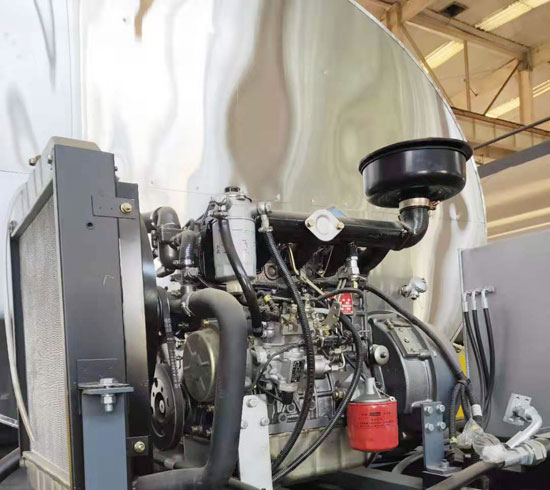
The design, production and installation of the asphalt tank mainly include the following aspects:
1. Determination of process equipment scale;
2. Overall layout arrangement;
3. Matching of matching equipment and thermal calculation;
4. The overall installation and production requirements of process equipment.



 RU
RU MM
MM AR
AR
